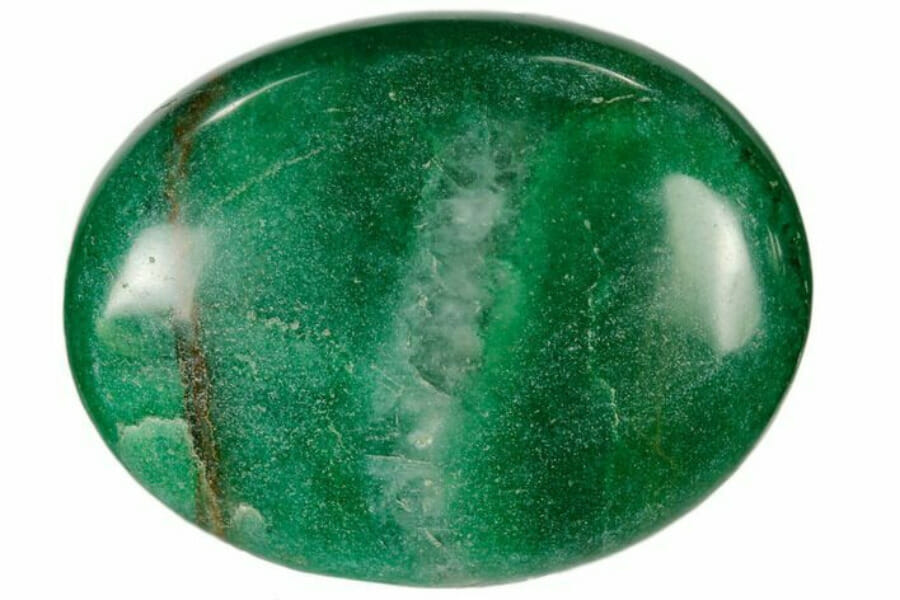If you’ve ever come across jade and aventurine, you might notice how strikingly alike they are. They’re similar enough that it can be hard to tell which one is which. They can have the same color and appearance, and they can seem identical to the untrained eye.
Though jade and aventurine may look very similar on the outside, they have many distinct qualities. Because of this, there are ways that you can tell them apart without any complicated tools or processes.
Jade can be especially valuable, so it’s important to make sure that you’re getting the real thing if you’re paying top dollar for it. Whether you’re interested in buying gems or you just want to learn more about geology, our jade vs aventurine guide can help you tell these two minerals apart.
Jade Vs Aventurine – The Major Differences
Let’s dive into the key things that make jade and aventurine unique. You’ll learn about their physical characteristics, how they came to be, and what makes them sparkle–or not!
Luster – Jade only has a vitreous luster
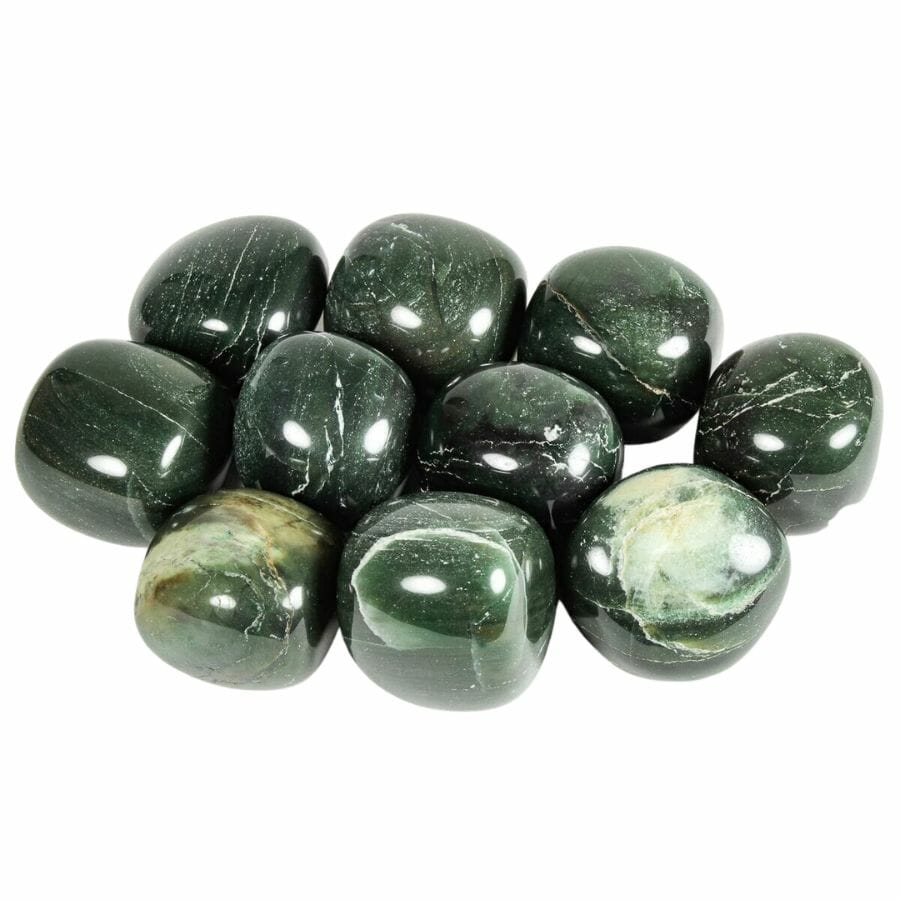
Luster is a term that geologists use to describe how light interacts with the surface of a mineral. In other words, it’s what the mineral looks like when light shines on it. Jade and aventurine have similar types of luster.
When you compare jade vs aventurine under the light, you might notice something similar about the way they shine. This shine or glow is what we call “luster.” Both jade and aventurine have a vitreous luster which means they shine like glass.
Aventurine isn’t just vitreous, but it’s also aventurescent. This means that it also has a sparkly quality. Because of this, aventurine looks like it has shiny specks that look like tiny stars.
This sparkling effect is due to small bits of a mineral called mica that are inside the aventurine. The mica reflects the light in such a way that it gives the aventurine a shimmery look.
While jade has a shiny surface, it’s not aventurescent.
Structure – Aventurine looks like quartz
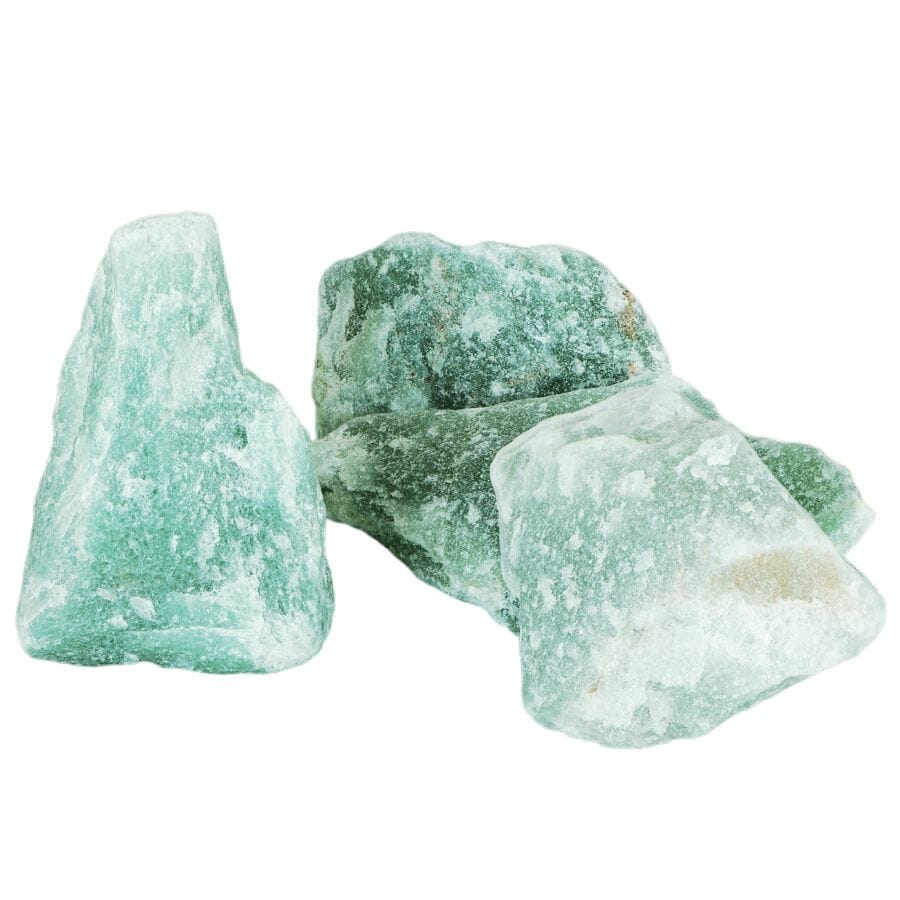
The crystal structure of a mineral is based on the arrangement of its atoms and molecules. These structures can be simple or complex, or take various forms like cubes, pyramids, or prisms.
Jadeite and nephrite, the two forms of jade, have a monoclinic crystal system. In this system, crystals look like three-dimensional rhombuses. This gives the crystals a distinct, slanted shape. Think of it like a rectangular box that’s tilted on one side.
Aventurine, a form of quartz, has a trigonal crystal system. A trigonal crystal system looks like a triangular prism, and it’s common in quartzes and other similar minerals.
Cleavage – Jade splinters like wood
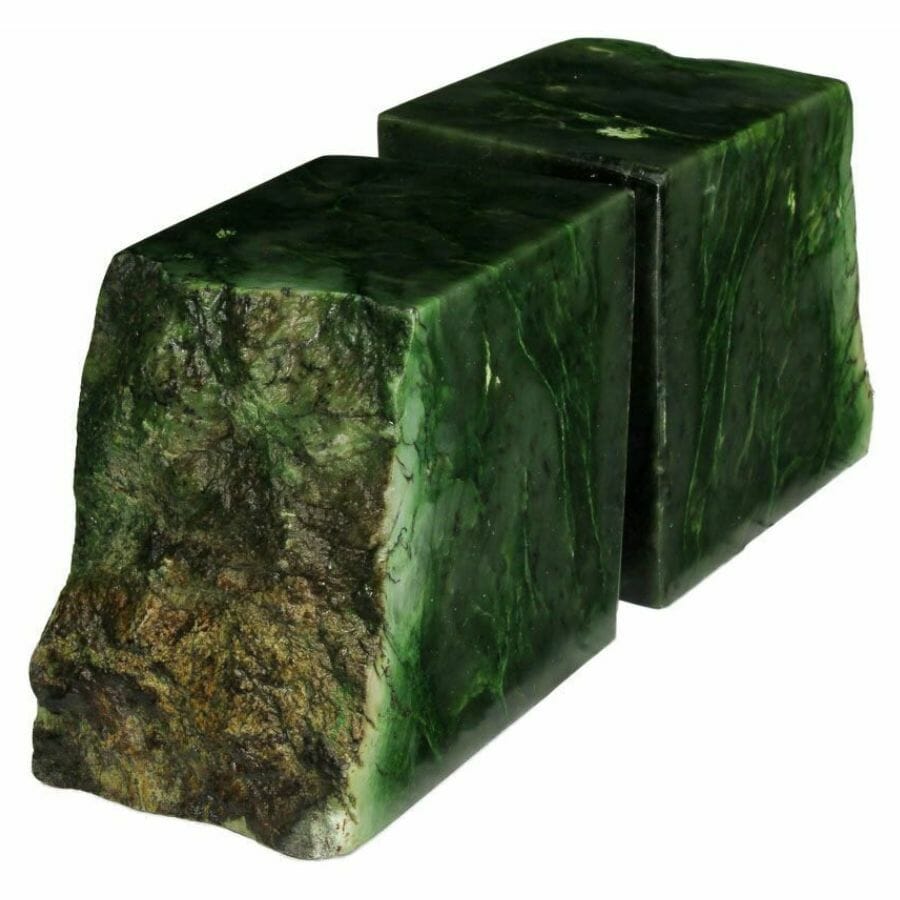
Cleavage in geology refers to how a mineral breaks along smooth, flat surfaces. A mineral’s cleavage pattern can help with identifying minerals.
Jade has a small grain size, so when it breaks, the cleavage isn’t very visible. Instead breaks in a splintery way, kind of like how wood splinters when it’s broken.
While some minerals have smooth and flat surfaces when they break, jade tends to break more like a tough piece of old wood.
In contrast, aventurine doesn’t cleave at all. Instead, it fractures, which means that it breaks irregularly along curved surfaces. When aventurine breaks, it creates a “conchoidal” fracture. It breaks in a way that resembles the inside of a seashell, kind of curved and smooth.
Density – Aventurine feels a bit lighter than jade
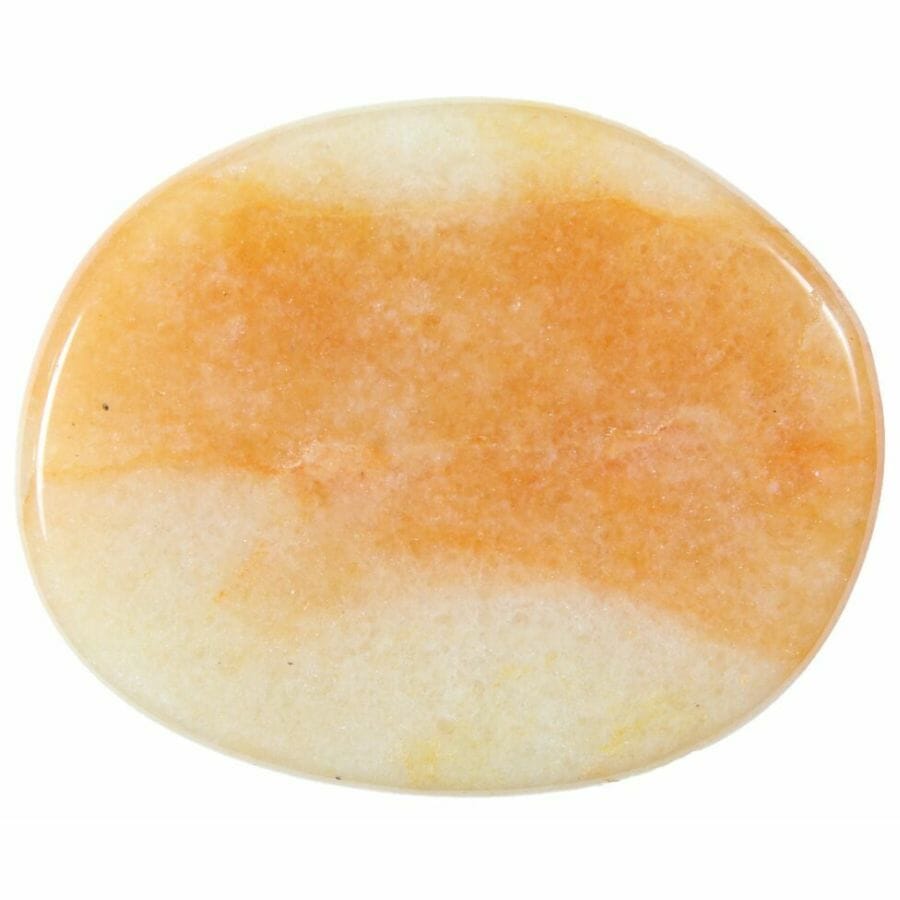
Density is all about how much matter is packed into a certain space. Picture a suitcase: if you lightly toss in a few clothes, it’ll be less dense. But if you cram in every t-shirt, sock, and sneaker you own, it’ll be super dense!
Mineral density is determined by the weight of atoms in the mineral and how closely those atoms are packed together. This is why some minerals feel heavier than others even if they’re the same size—they have a higher density!
The two forms of jade have slightly different densities. Jadeite has a density of about 3.25 grams to 3.36 grams per cubic centimeter. Nephrite is a bit less dense at about 2.9 grams to 3.03 grams per cubic centimeter.
Meanwhile, aventurine has a density of around 2.63 to 2.65 grams per cubic centimeter.
While there’s a clear difference in density between the two forms of jade and aventurine, you won’t feel much of a difference in weight. For example, lead has a density of around 11.29 grams per cubic centimeter. This means that it will feel a lot heavier than a jade or aventurine cube of the same size.
Formation – Jade is a metamorphic mineral
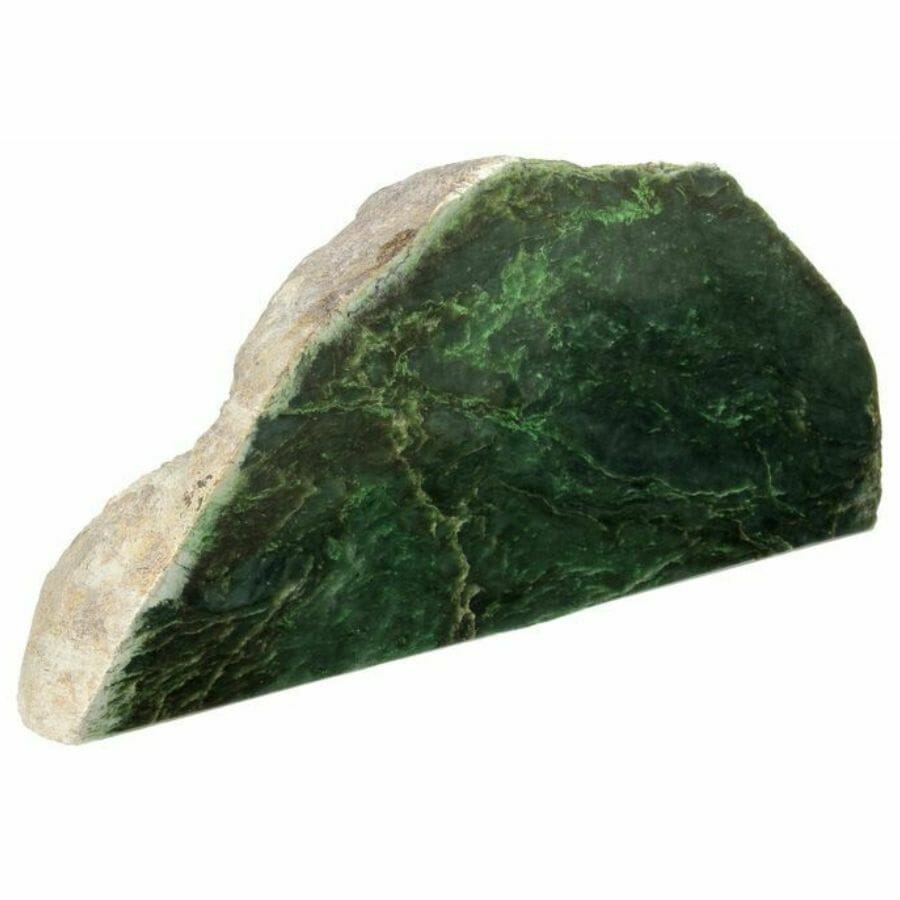
Jade has a pretty cool origin story. It’s born under extreme conditions deep within the Earth’s crust. When rocks are exposed to very high pressure and temperature conditions, the original rock transforms into something new.
This process is known as metamorphism. Jade comes into being under these intense conditions, either as jadeite or nephrite. Movements in the Earth’s crust, like earthquakes, will then move jade up to the surface.
Aventurine is a type of quartz, and it forms when molten rock from deep within the Earth cools and crystallizes. During this cooling process, tiny pieces of other minerals, especially mica, get trapped inside the quartz.
These mineral inclusions give aventurine its aventurescence.
So, when you hold a piece of jade or aventurine, you’re not just holding a piece of quartz. You’re holding a piece of the Earth’s interior and its incredible geologic processes!
Location – Aventurine can be found in all types of rocks
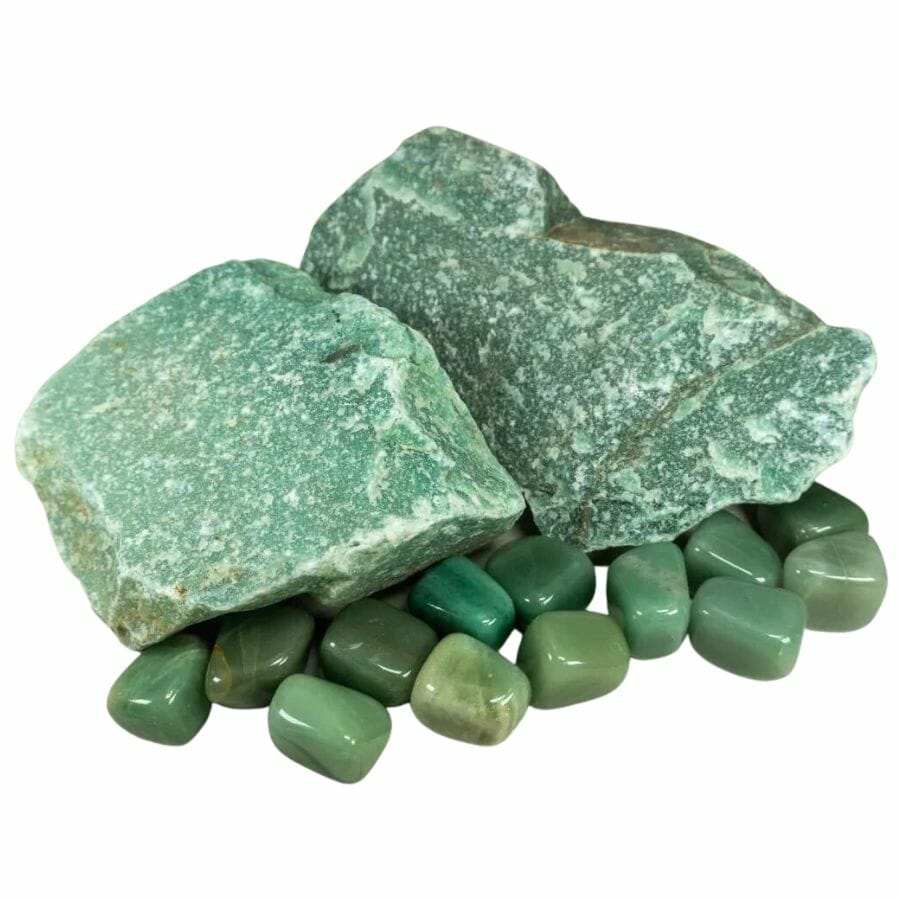
Both jade and aventurine can be found all over the world. They can show up in different places because of how they’re formed. You can check out the best rockhounding locations to see the best places to find jade and aventurine.
Jade only forms in metamorphic rocks, so you won’t find it in igneous or sedimentary rocks.
Aventurine, on the other hand, is found in metamorphic, igneous, and sedimentary rocks.
Igneous rocks form when molten rock, or magma, from within the Earth cools and solidifies. Sedimentary rocks form over many years from the fragments of other rocks, plant remains, and animal fossils. This means that you can go crystal hunting just about anywhere in the world!
Price – Jade is much more expensive
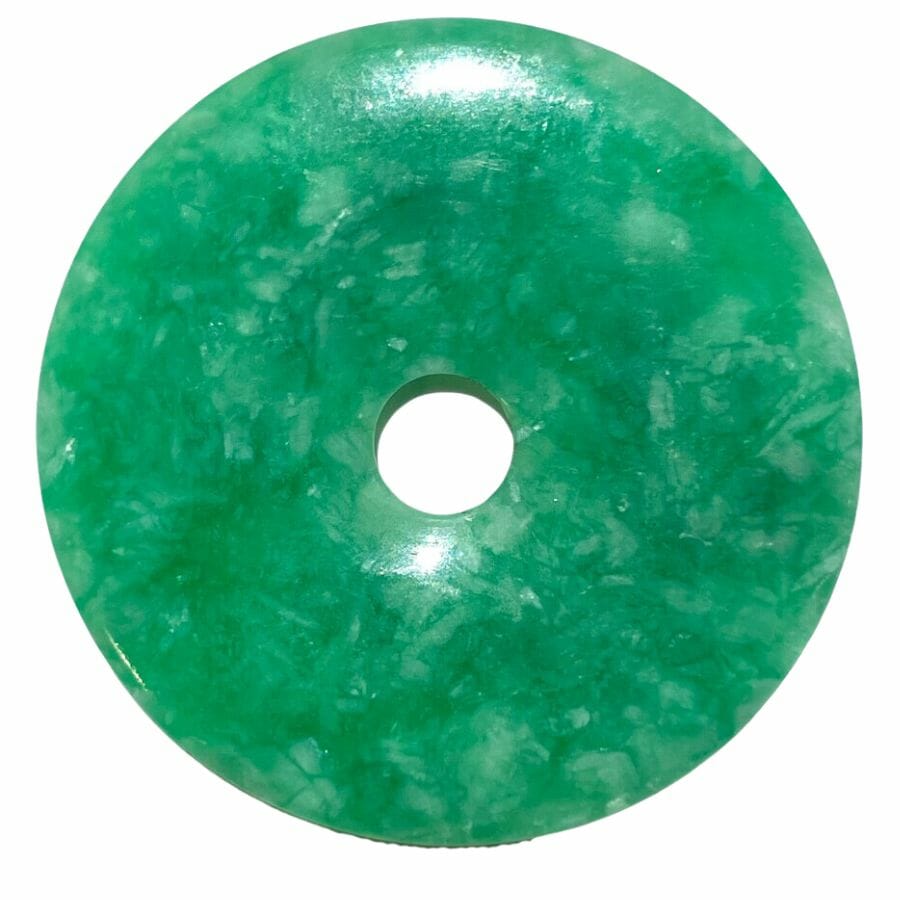
The price of jade and aventurine can be quite different because of things like rarity, quality, and demand.
Jade, especially imperial green jade from Burma, can be quite expensive. It’s in high demand because of its beauty and cultural significance.
The price difference between different types of jade is quite stark. Imperial green jade from Burma can cost anywhere from $350 to $550 per carat. Jade that comes in other colors, especially red, is much cheaper. It will only set you back about $1 to $15.
In contrast, the value of green aventurine is significantly lower, with prices ranging from $3 to $30 per carat. While aventurine also comes in beautiful green shades, it does not have the same value as jade.
If you like the look of jade but you hate the price tag, there are minerals that are more affordable but still as beautiful. Check out how much these minerals cost with the help of our guides:
Aventurine Vs Jade – The Similarities
Now, we’re going to explore how jade and aventurine are alike. Even though they’re different types of gems, they have some fascinating things in common.
Colors – Both are usually green, but can also come in different colors
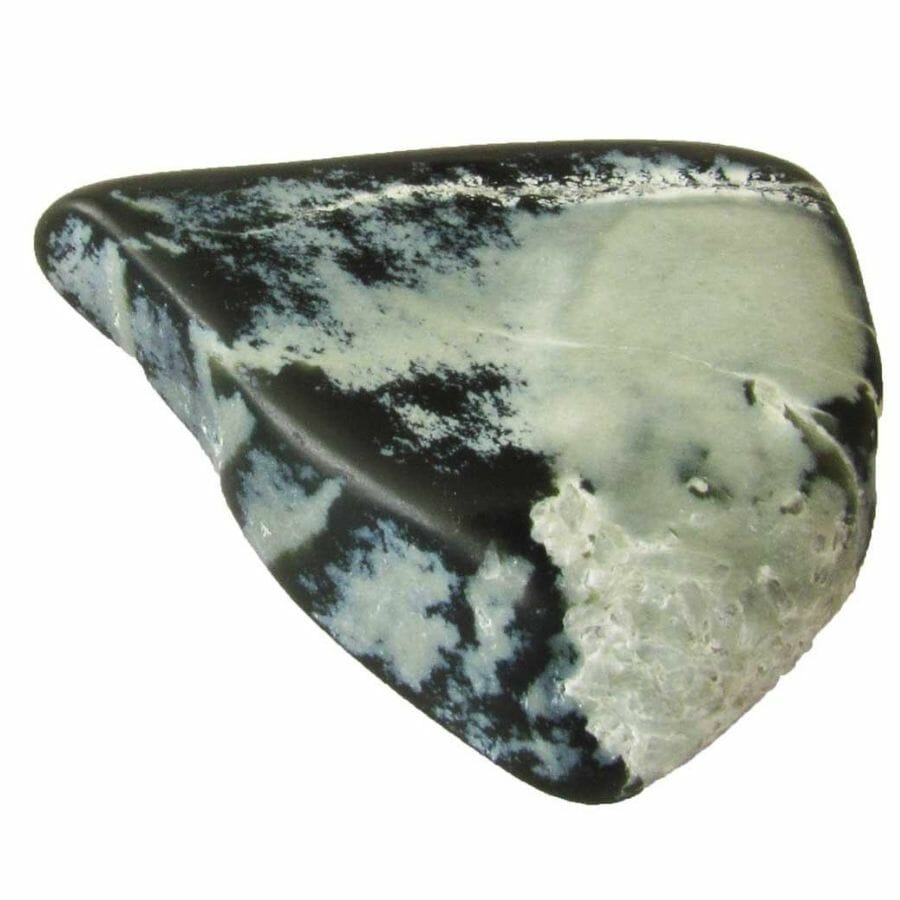
Jade and aventurine share some striking similarities when it comes to color. That’s why it’s easy to mistake aventurine for jade at first glance.
Jade is most commonly found in various shades of green, ranging from pale, almost white greens to deep, rich emerald greens. However, it also comes in other colors, such as red, black, white, yellow, pink, and even gray.
Aventurine is also most commonly associated with green. This green color usually comes from tiny inclusions of a green mineral called fuchsite. The more fuchsite inclusions, the greener the aventurine.
Other than green, aventurine can also occur in blue, red, orange, yellow, and gray varieties.
Hardness – They have a similar hardness
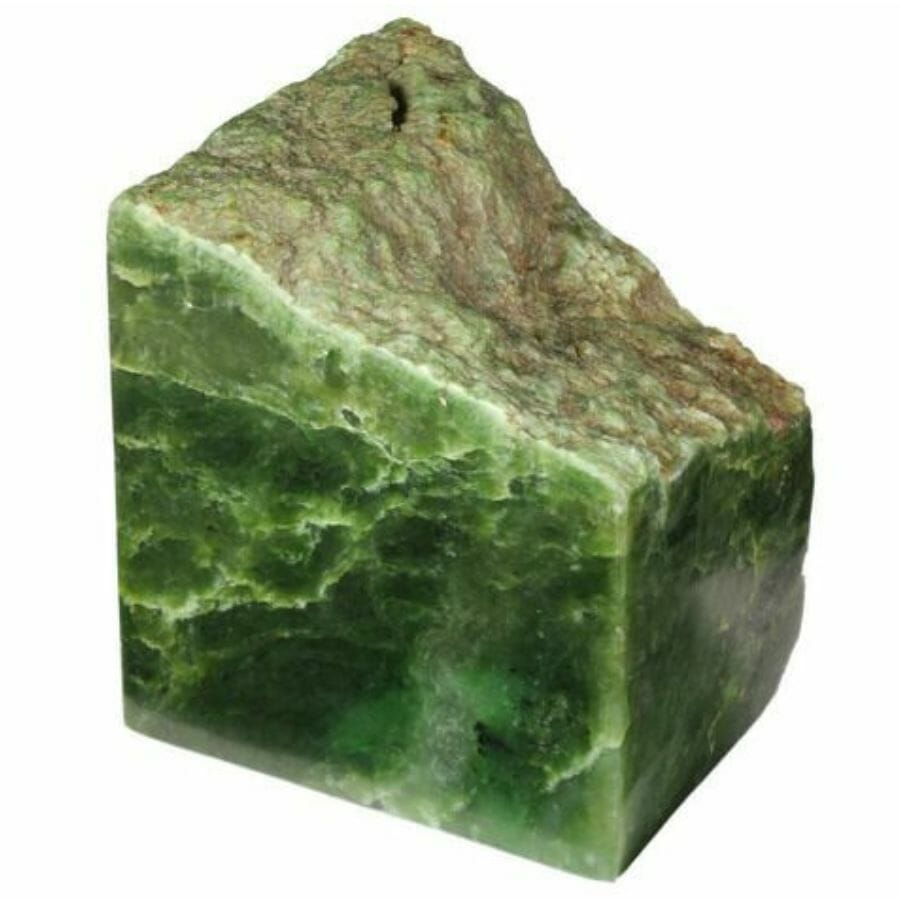
In geology, hardness is how we measure a mineral’s resistance to being scratched. Minerals are rated from 1 to 10 on the Mohs hardness scale.
The Mohs Scale is like a ruler for measuring the hardness of minerals. The scale goes from 1 (very soft) to 10 (very hard). For example, talc, which is used in baby powder, gets a 1. But diamond, one of the hardest substances we know of, earns a top score of 10.
On the Mohs Scale, jade ranks around 6 to 7. Aventurine, meanwhile, has a hardness of 6.5 to 7.
Scientists and rock collectors use this scale to identify minerals by seeing what they can scratch and what can scratch them.
Streak – Both jade and aventurine have a colorless streak
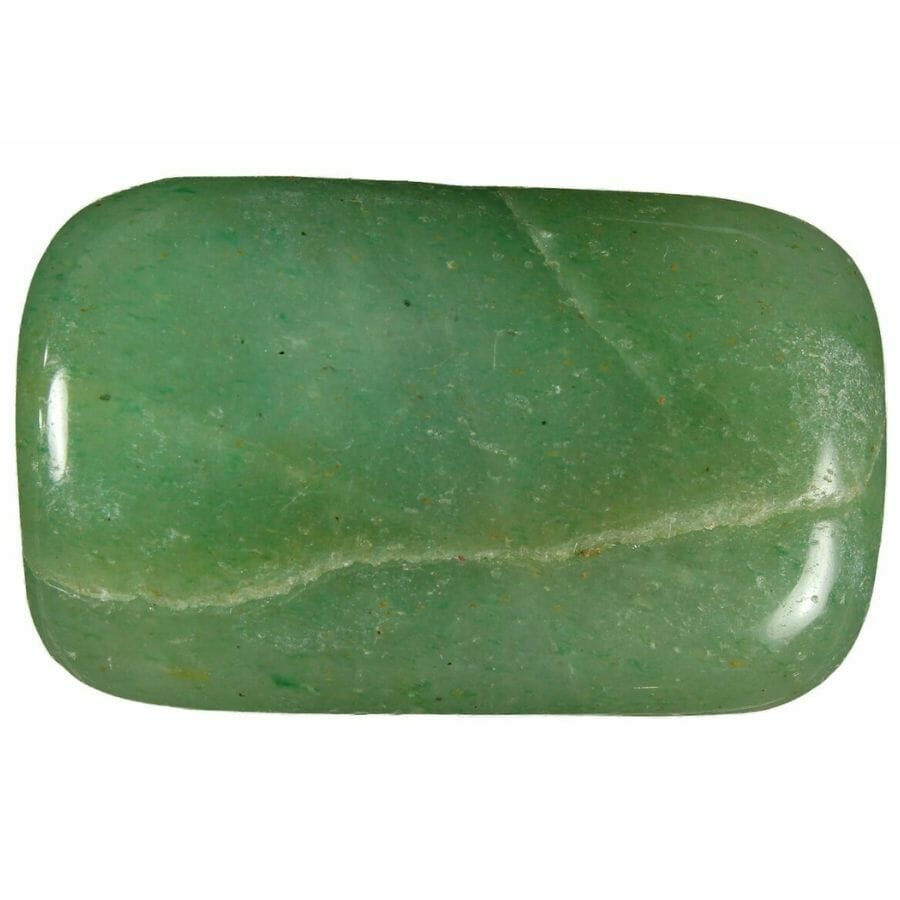
In geology, streak refers to the color of the powder left by a mineral when it is scratched against a rough surface. People usually use a porcelain tile known as a streak plate for this purpose. The streak color can be different from the color of the mineral itself.
Here’s where it gets interesting. Jade, aventurine, and the streak plate all have a similar hardness.
We’ve discussed the hardness of jade and aventurine above. In comparison, the streak plate has a hardness of 6.5.
What does this mean for the streak test? Well, when you rub jade and aventurine across a streak plate, they won’t leave a colored mark behind.
This is because the hardness of jade and aventurine is similar to the hardness of the streak plate. Thus, these minerals don’t get ground down enough to leave a colored streak.
Magnetism – Neither has strong magnetic properties
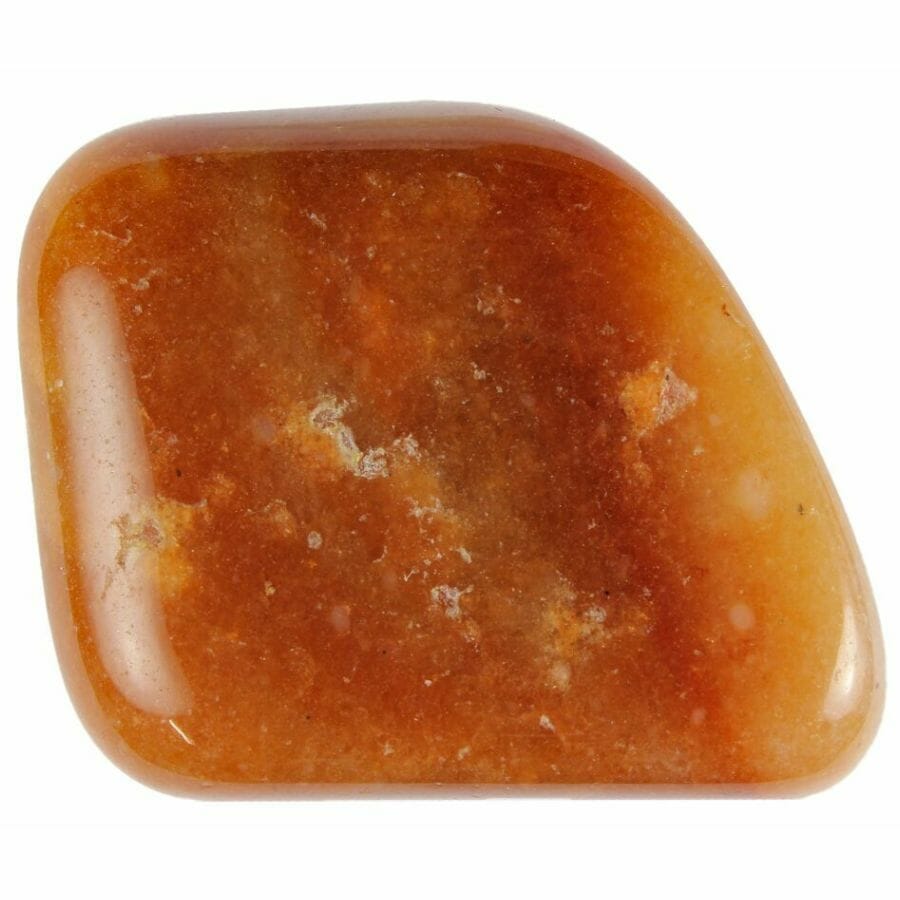
Magnetism is a force that can attract or repel certain materials. It’s why magnets stick to your fridge!
Jade is paramagnetic, so it can be weakly attracted to an external magnetic field. Aventurine is not magnetic at all, and it has no reaction to magnets.
This means that if you held a magnet up to a piece of either jade or aventurine, nothing would happen. You won’t feel the magnet attracting or repelling either stone.
Chemical Composition – They are mostly made of the same elements
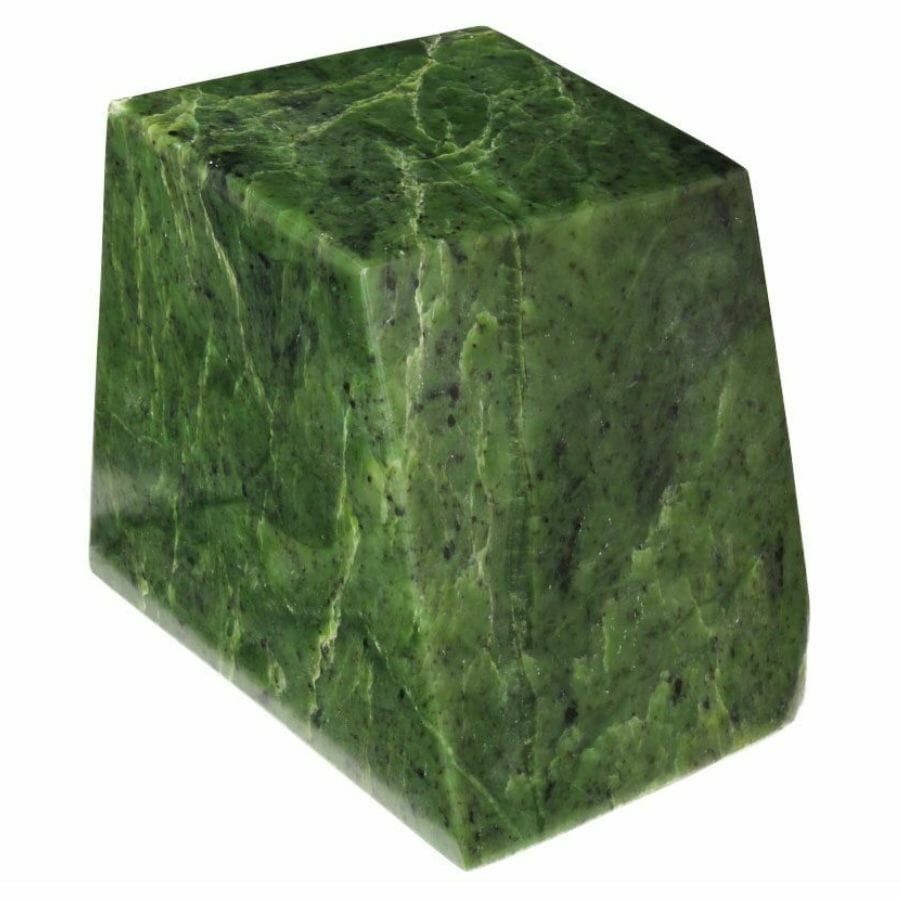
Chemical composition refers to the types and arrangement of atoms that make up a mineral. Think of it as the mineral’s recipe. Each mineral has its own unique combination of elements, like silicon, oxygen, or iron.
Jade and aventurine both belong to a big family of minerals called silicates. Silicates are made of oxygen and silicon, and they make up over 90% of the Earth’s crust.
Jadeite is a pyroxene silicate, and nephrite is an amphibole silicate. These two types of jade have slight differences in their makeup, but they’re both made mainly of silicon and oxygen.
Aventurine is a type of quartz, which is another member of the silicate family. This gemstone forms when molten rock cools and becomes solid. Like jade, it’s made primarily of silicon and oxygen atoms.
Fluorescence – Both jade and aventurine do not glow under UV light
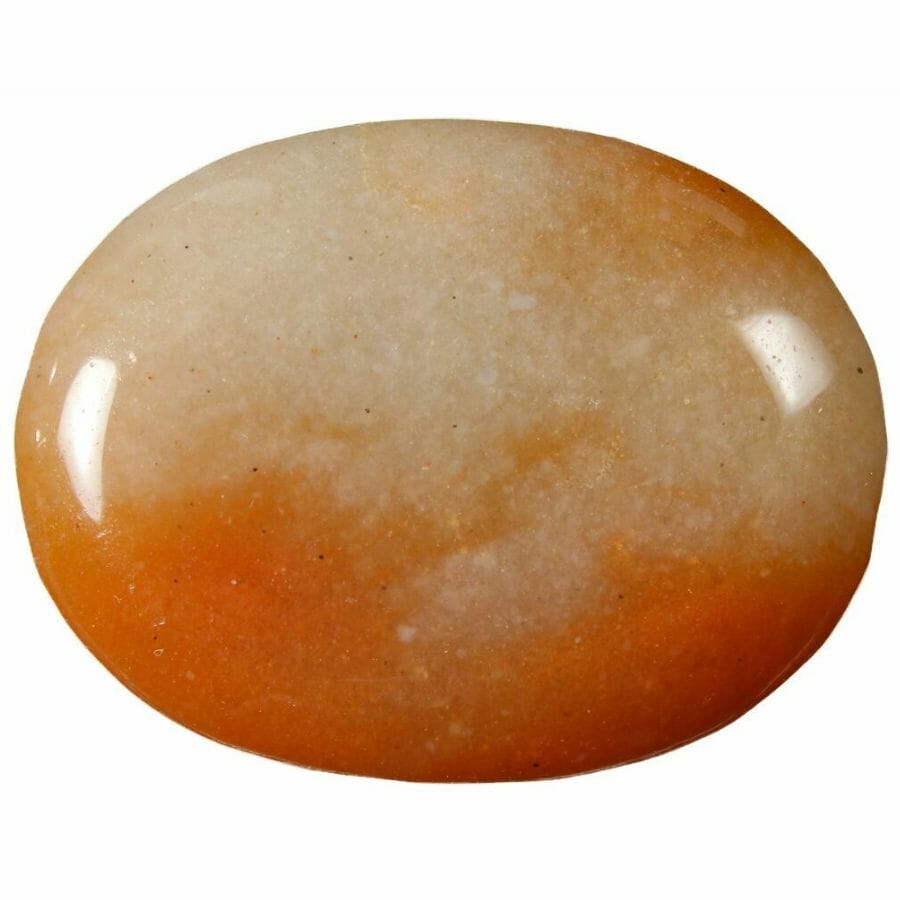
Fluorescence is a property that causes minerals to glow under ultraviolet (UV) light. Not all minerals have this property, and that includes jade and aventurine.
When exposed to UV light, jade doesn’t show any distinct color change. Treated jade can glow faintly in UV light, but natural untreated jade won’t.
Aventurine, a form of quartz, is also typically not fluorescent. However, polymer-impregnated aventurine can appear fluorescent under UV light.
Polymer impregnation is like giving a material a “boost.” It involves filling the tiny pores or gaps in a material (like wood or stone) with a plastic or resin, called a polymer. This process makes the material stronger and more resistant to damage.
Conductivity – Aventurine and jade are not good conductors
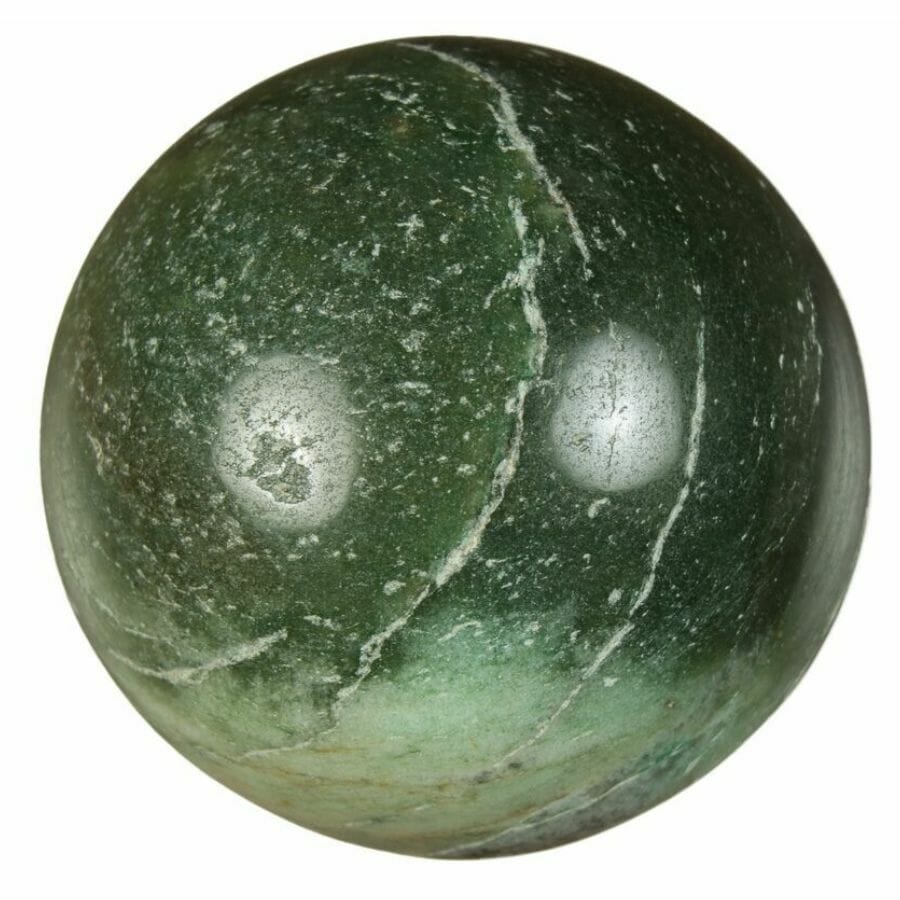
Conductivity in minerals refers to their ability to transmit heat or electricity. Think of how a metal spoon heats up when you leave it in a hot soup. That’s because metal is a good conductor of heat.
Most minerals, however, are not good conductors. Aventurine and jade are no different.
Jade, whether it’s jadeite or nephrite, is a poor conductor of both heat and electricity. That’s why it’s usually cool to the touch and it won’t heat up easily.
Aventurine is also non-conductive, so it won’t react to heat or electricity.
The Easiest Ways to Tell Jade and Aventurine Apart
Jade and aventurine, two beautiful green gemstones, may seem similar at first glance. But with a little know-how, you can learn how to tell them apart.
Check for sparkles
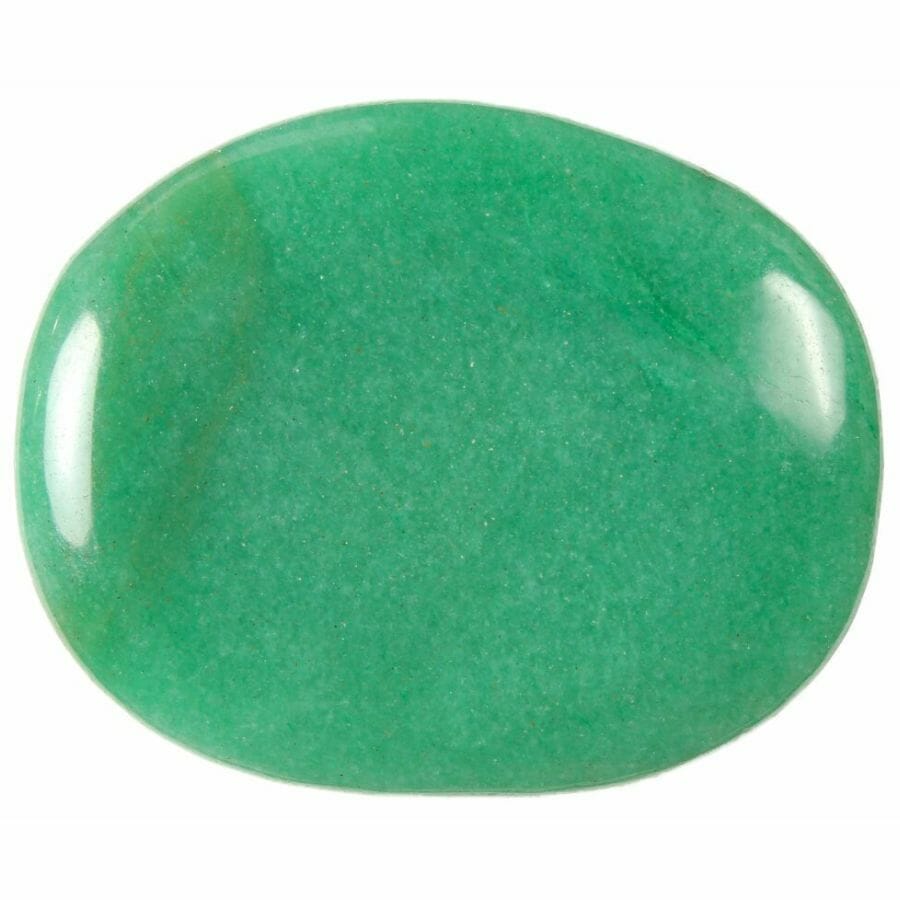
When you compare aventurine vs jade, you’ll see that jade does not have the same aventurescence as aventurine. Instead, jade has a smooth and even surface with a consistent shine. It won’t have the scattered glittering that aventurine exhibits.
By observing the presence or absence of this glittering effect, you can tell the difference between jade and aventurine. If you see a green stone with a shimmering, sparkly effect, it’s likely to be aventurine.
Polishing aventurine reduces its sparkly appearance. You’ll have to look more closely to see if the stone has simply been polished, or if it doesn’t sparkle at all.
But if it’s a smooth and evenly lustrous gemstone, you’re likely looking at jade. Remember that other minerals can also look like jade, such as serpentine, amazonite, chalcedony, and more. So, the stone you’re looking at might not even be jade or aventurine.
Shine a light through the stone
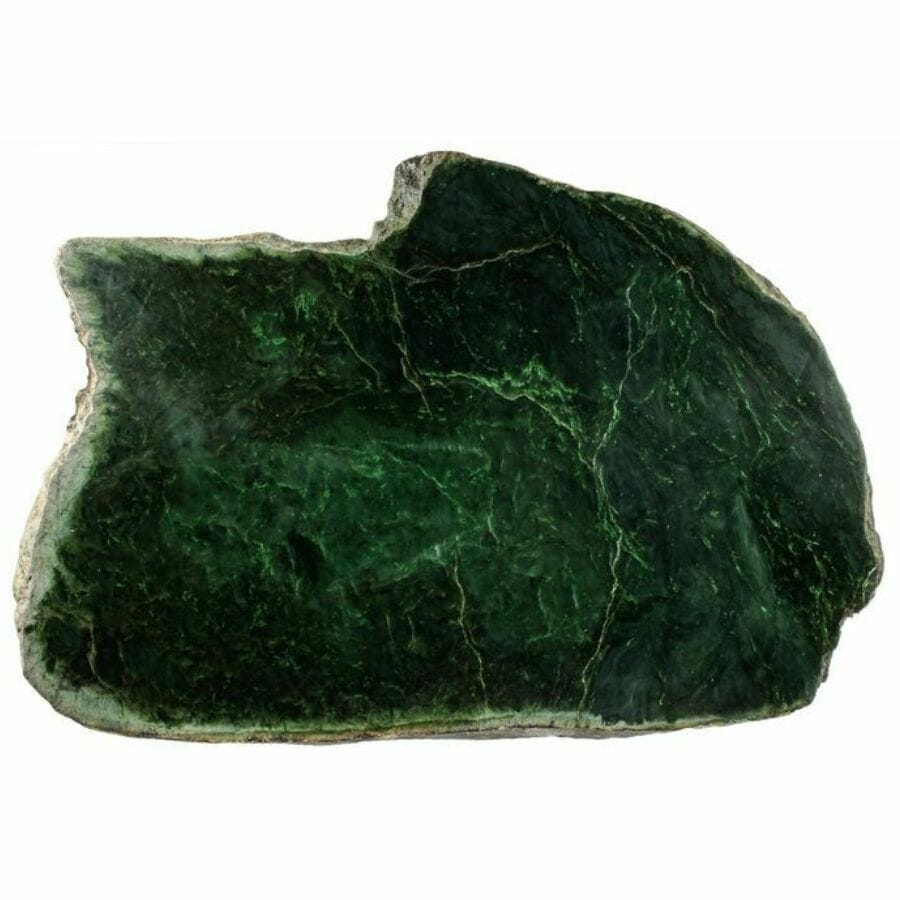
Here’s a pretty neat trick you can use to tell aventurine and jade apart using nothing more than your phone flashlight.
Put the jade stone over the light. The stone isn’t completely opaque, which means some light can pass through it. If you look closely, you might notice tiny specks throughout the material.
These little specks can be different colors, depending on what minerals are mixed in with the jade.
Now let’s switch to the aventurine. When you shine light through this stone, you might notice something really cool. The aventurine will start to glitter, almost like there are tiny stars trapped inside the stone.
Despite both stones having specks in them, aventurescence sets aventurine apart from jade.
So next time you’re not sure if you’re looking at jade or aventurine, try the flashlight test. You might be surprised at the beautiful display each stone can give!

